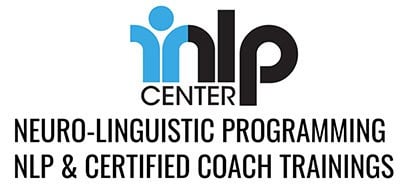Our Personal Development Program is a group of online courses we designed to address common challenges people face. Each of these courses may include workbooks, videos, audio guides, exercises, and a unique approach to the issue it addresses. These courses are only available as a group. Once purchased, you’ll have immediate access.
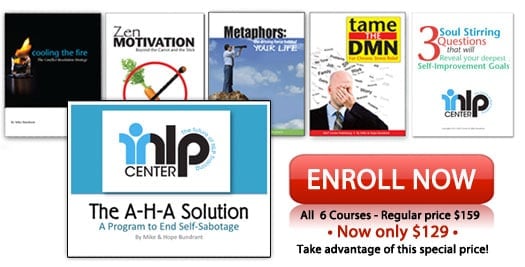
Personal Development Courses:

The A-H-A Solution: A Program to End Self-Sabotage
The A-H-A Solution is a unique personal development program that expands and further defines the A-H-A Process video (if you haven’t watched it yet, click here). It works by showing you specifically how negative attachments apply to you.
Then, we give you real-life examples and tools that guide you through the process of change. With this online program, you’ll have the tools to free yourself from self-sabotage and negative thoughts or feelings. Read more…
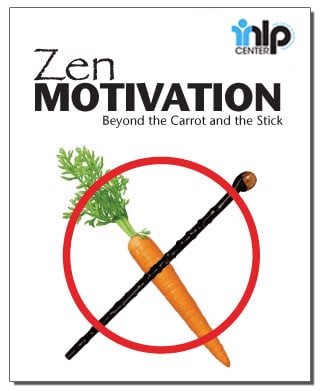
Zen Motivation: Beyond the Carrot and the Stick
We all know that making personal changes can be tough. Even when we know that those changes will lead to greater success with our health, relationships, and career, we still resist. It’s not hard to believe that the failure rate of self-improvement efforts, in general, is 65% to 90% (Sellman, D, 2009). One reason for this astonishingly high failure rate has to do with typical methods of self-motivation. Common tactics intended to get yourself in gear always backfire and create greater stress in your life. Zen motivation changes the quality of your motivation at the most fundamental level.

Tame the DMN for Chronic Stress Relief
The Tame the DMN stress management program pinpoints the specific brain network responsible for generating the sea of spinning thoughts, mind chatter, and chronic emotional grind that defines high-stress living. And it is NOT your primitive brain. Learning to deactivate this brain network will automatically relieve your chronic stress and change your life forever.
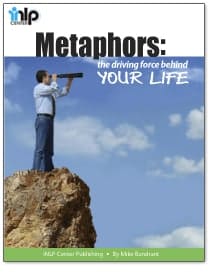
Metaphors: The Driving Force Behind Your Life
So often we act as if we don’t have a choice in the way we experience life. The truth is that you can radically change your entire way of being in the world by simply changing your life metaphor. Imagine if you could be happier and more content, more loving towards others, more motivated and fulfilled, with a greater capacity to handle challenges.

Cooling the Fire: The Conflict Resolution Strategy
Most of us attempt to resolve conflicts with other people in a perfectly unproductive way. We tend to do the exact opposite of what works! Why does conflict resolution seem counter-intuitive? Maybe it’s human nature or social conditioning that directs our inefficient conflict resolution strategies. Regardless of the cause, we almost universally lack a good strategy for taking the most challenging conflicts in communication and turning them quickly into productive and calm engagements. Until now.
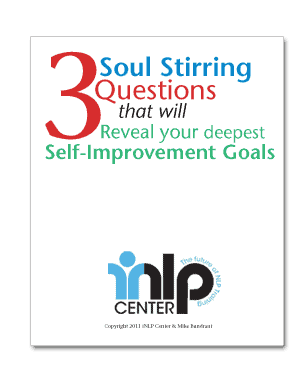
Three Soul Stirring Questions
As you make efforts to improve your life, gain new skills, and grow as a person, consider the following: What if you were missing some key factors? What if some of your deepest needs were forgotten along the way?
This NLP-based course will help you determine the things that are holding you back from achieving higher self-awareness and greater personal freedom.

Customer Testimonials:

Van Loock R.:
What a shock. I didn’t realize how much loneliness I had BUILT around me. Very very useful module! I have some beliefs that don’t quite match my values and have been upsetting myself in the process. Definitely I see life as an adventure but at the same time haven’t created enough adventure. Time for new metaphors – thanks
Rose D.:
My old life metaphor was a car that kept crashing. My new one is a sailing ship with all the horns bells and whistles.
Conway K.:
I found it hard to do a 360 degree thinking around a metaphor that would be positive no matter which way you look at it. But I guess your life metaphor can change as life circumstances change too…
Kennedy D.:
My old life metaphor was seeing life as a punishment. That was so eye opening. I didn’t know why whenever I made progress I would take two steps forward and one back on an emotional level. On the outside I had many accomplishments and looked good on paper.
My new life metaphor is life is a journey, no more self judgement and criticism, and blame, and no more thinking that of others. This lesson is very meaningful to me. I would have guessed that my life metaphor was life is a test or life is suffering,but going through this I realized my own stumbling blocks. Thanks for the lesson.
Small R.:
My old Life Metaphor was like ” a soldier, grin and bear it … never cry or feel ” get all tasks done at the expense of who I am. My new one is like … yes Jesus … stay present, feel, stay joyful .. shoot for perfect awareness … a general mindset of nothing needs fixed all is the way it is meant to be. (It eliminates the negative effects of subconscious kicking in when we think of the past or future- with early programming running the show).
Scarlott A.:
This really does strike a chord when you realize what your metaphor for your life has been and how it has been tripping you up in relationships and emotionally. It will take a great deal of practice, but I am eager to begin utilizing my new metaphor. “Life is one amazing, yet mysterious romance novel.”
Vesel C.:
This is a very powerful section! I plan on revisiting these questions again and again, to see if I can make progress with my life metaphors.
I found that I view my life as a rosebush with lots of thorns and dying blossoms. I am like Edward Scissorhands, trying to prune out the fading pieces and hoping that new blooms will form. This creates a negative state when winter comes (and I HATE winter!).
My new life metaphor is that of an adventure vacation, where I live on an island that allows me to refresh and restore for my next challenge. This opens me up to the cyclic nature of life, with flowing, unjudged energy, and an appreciation for creativity and art in all things.
Tame the DMN Testimonials
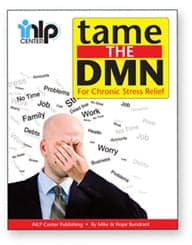
Dittman D.:
I am looking forward to going outside with all of my livestock and my dog Willie (lots of textures and sounds to focus on. And..doing my Art again without so much stress and avoidance of doing what I used to love to do, due to my negative critic. I am so looking forward to further practice deactivating the DMN and will start now. Thank you.
Rose D.:
I did notice the difference when deactivating the DMN. There is a saying in a 12-step program: “My mind is not my friend.” I see the correlation between my ADHD and my brain and the power I have to help myself. Have always noticed that helping others in daily life is very beneficial for good mental health.
Conway K.:
It did make a difference to take my inner distress out of the picture, helped my focus with more clarity.
Small R.:
Just like stressor mapping in NLP …. cool!
Silva K.:
I always thought I was pretty good at looking at the positive qualities in most things, in order to motivate myself. Now I realize, I was just replacing negative stress with positive stress, dangling the carrot in front of myself. Which can be pretty disappointing when one doesn’t get the carrot. I have applied the Zen motivation to two areas of my life today and already feel a difference.
Hyde J.:
Thanks for the insight I wished I know about this years ago.
Fuller L.:
This is a great technique to help keep you centered. I am glad I did the Tame the DMN module first because the material seems to have a more profoundly impacted my ability to understand and integrate this material and put it into practice.
Patterson K.:
I can feel that I am calmer. The comments outside my circle are much different. I even felt hope.
Vesel C.:
I am glad that I did “Tame the DMN” yesterday, as Zen Motivation goes hand in hand. It is an excellent technique that I want to practice until I can call upon it – even in the most stressful circumstance.
Van Loock R.:
Oh wow! I want to do this at least once a day or whenever is necessary. I could hardly believe how fast the change was. Coincidentally I quit smoking a week ago and this will help with cravings even though that wasn’t what I wrote in the circles. I am looking forward to developing this further. Thanks!
Baez H.:
Thanks for this lesson in which I learned to center myself on the here and now, instead of escaping off to daydreaming and other customary internal world distractions.
Prior J.:
Will apply today. Amazing the difference between the “before” and “after” circle. Before circle crowded with painful thoughts with a few “It’ll be great when its done, reasons to do etc, after , I just put “OK” Will re-post after applying for a few days.
Cooling the Fire Testimonials
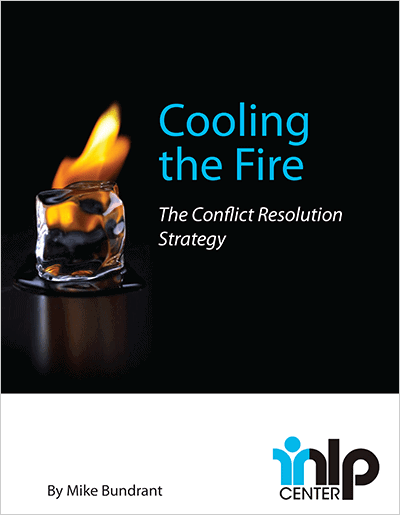
Canale D.:
I love the concept of this tool. I have always been a retaliator when attacked because i thought i was defending myself but this makes perfect sense to diffuse the situation then when all the adrenalin calms down we can communicate properly . I will definitely try my best to adopt this approach. (Even if i get one attack back then start this approach, haha) Thanks Mike
Swart J.:
This looks like an excellent tool. I like that the first thing it seems to do is get us to choose a conscious strategy instead of an unconscious one. Then, by virtue of the responses themselves (seeking information & giving information) we are automatically led into a different attitude toward the other person. We must drop the attitude of having a position to defend in order to step into the attitude of curiosity about the other. It seems to me that this change in attitude is in itself the real meat of what makes this approach effective.
Johnson N.:
In the Karen/Larry example, the last thing Larry says is “… I love you and I don’t want you to be upset. Do you have time to listen now?” – this has been indicated as “still seeking info” – but it is actually a combination of giving information (I love you and … upset), and seeking info. It is just common-sense to resolve conflict in this manner.
Lagneryd E.:
Interesting. We are a couple that recognize patterns in heated situations. We are sure that this is a good tool.
Ponti L.:
Thanks so much. Very practical and I’ll apply it the first chance I get! The counterintuitive part intrigues me. Since we don’t usually think particularly well during conflict why would I trust my judgement in a heated moment that’s being carried along emotions? My new mantra is “manage your state”.
Ponkin S.:
“Cooling the Fire”. This is very interesting! I discovered it to be a very useful tool in communication with children. It really helps to give information instead of asking questions when kids don’t want to talk to you. Really helpful!
Rose D.:
I am very much looking forward to learning the material. Mike explains the introduction very clearly.
Marshall M.:
It seems simple enough. A lot of it is self awareness, so we don’t just react, but to be aware enough to put the brakes on our own reactions and tap into these techniques. A problem I can foresee is the person who physically withdraws. Following may be perceived as an attack.
Conway K.:
I liked this mode for conflict resolution it seems to fit right, now to practice it.
Kamar M.:
The jury’s still out. I have high expectations and so far it looks like they will be met.
Stoudt T.:
What insight! and useful..
Silva K.:
I found this unit to be extremely helpful in gaining an understanding of an “attack”. I feel that the information I have gained from this unit will enable me to understand what the person who is attacking is feeling as well as I why I have attacked myself in the past. For now I will be working on identifying an attack and practicing to seek information to diffuse the attack.
Lewis J.:
I am going to start using this now with my wife! I will also employ with business clients.
Wingard A.:
I consider the conflict map and guidelines very useful. I have used them without even know it but I still need to practice them. I find myself more in Abandon conflict. I have difficulties in expressing my opinion because I am afraid I will loose people respect. Recently I have started to become more confident in my English and I got the desired position. Thinking back, I realized it wasn’t about the perfection of the language I used but my low self esteem. I am happy to be here and learn how to change my limiting beliefs and get rid of self-sabotage.
Vesel C.:
In addition to learning how to resolve conflict, this module helped me realize what my default conflict strategy is: Abandon. The technique is simple on paper, but I hope to put it into practice soon! (I could have used it at 1am this morning…)
Chant R.:
Such great, really practical strategies, that i believe any one can implement – i can so relate to the tug of war power play that gets carried out when our emotions are flying high and can see already how this will counteract that power play and tug of war..I really look forward to challenging myself by using these two rules of ‘seeking info’ and ‘giving info’ at the appropriate times and the inner power that will develop from ‘managing my state’. Cheers and smiles Robyn
McDonald S.:
This is an excellent lesson that I am hoping to put into practice soon. I have been known to be fairly hot headed in conflict and react in ways that fueled the fire but I think that this will be very helpful in future encounters! Thank you!
Leslie S.:
Controlling my own emotions, at the beginning especially, is often the hardest part for me, but I am getting better. I appreciate the fact that I’m getting tools I can actually use to get control of my communications with others.
Mancini V.:
I appreciate the conflict map and I have used this technique in my professional life and as well as my personal life. The greatest obstacle that I have had to overcome is to keep calm and level headed when these situations arise. I must admit that I still have not perfected the technique because as was mentioned in the audio portion of this lesson the normal mode to go into is the defense mode when having feelings of being attacked. That’s the problem I am not always in a calm and grounded mood.
I have found that I must keep conscious of my mood so I may defuse my defenses and put myself in a calm grounded state of mind. I feel meditating on being grounded and setting up anchors for me has been a great help. Thank you for enlightening me on the mechanics of the conflict resolution method.



